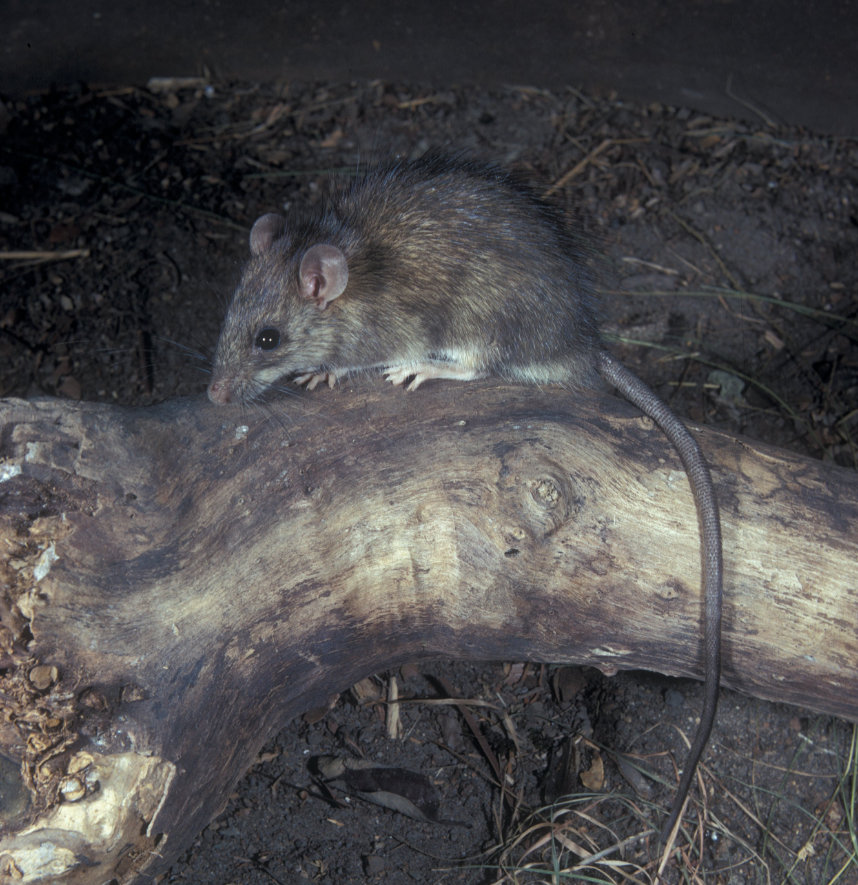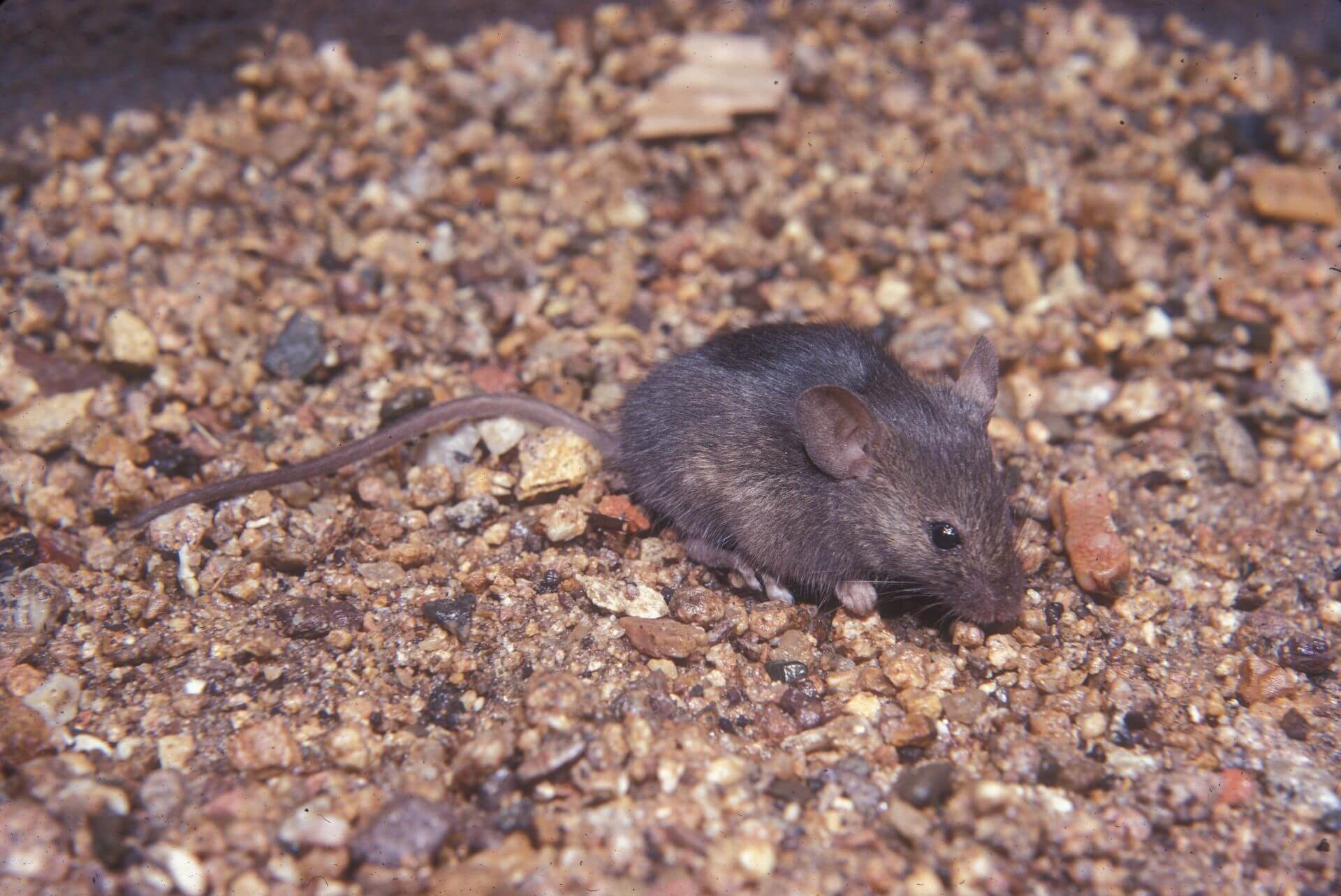
Rat and mouse are common names for rodents that look alike to the common eye, these names are not scientific classifications.
Appearance, life cycle and habits
Rats and mice are mammals and rodents. Rats are medium-sized rodents with long thin tails. A Mouse is a very small rodent with a long thin tail. Mouse ears are very large relative to their heads, where rat ears are smaller relative to their heads. Rats also have thicker tails than mice. Rats are cautious, and mice are curious.
Rats and mice find food and shelter in buildings, particularly during late autumn and winter. Rats and mice are mostly active at night and they eat a wide range of foods.

Norway Rat (Rattus Norvegicus)
The Norway Rat is also known as the common or brown rat and it is the largest and one of the best-known rats. The Norway Rat has a heavy and thick body, blunt snout, short ears and dark hair. They have a brown body with black shading and a shaggy coat and their tails are shorter than its body length. Adults weigh 300 to 400 grams. Their droppings are shaped like capsules.It is a major pest in the most human environments where food and shelter are available. It is often present in food handling facilities, sewers, garbage areas and on most types of farms. In cold weather they will live inside buildings, making their nests in walls and roof cavities.
It lives about one year, and during that time, produces five to six litters – each having about eight young.

Roof Rat (Rattus Rattus)
The Roof Rat is also known as the black, ship or house rat and it has a light and slender body, pointed snout, large ears with no hair. They have a grey, black or brown body with black shading, and a smooth coat and a dark tail. Its tail is longer than its entire body. Adults weigh 200 grams. Their droppings are shaped like spindles.The roof rat is usually found in city and suburban areas. They nest indoors but also outside where the vegetation gives them nesting security. When in buildings, they nest in roof cavities. They are good climbers and travel up and down pipes.
It lives about one year and can produce four to five litters – each having six to eight young.

House mouse (Mus Musculus)
The house mouse is also known as the field mouse. It is a small rodent and has a small head, small feet, pointed snout and large hairy ears. The house mouse has a light brown body with grey shading and a dark tail, with its tail is about the length of the body. Adults weigh 15 to 20 grams. Their droppings are shaped like rods.When it is located outside, it is a yellow-brown colour, paler than those living inside, which are usually a darkish grey colour. Because of their size they have easy access to the home, and nests in walls, cupboards and roof cavities.
It lives about six months to a year, and during that time, produces six to ten – each having five to six young.
Cats, wild dogs, foxes, birds of prey, snakes and even certain kinds of insects have known to prey heavily upon mice.
Nevertheless, due to its remarkable adaptability to almost any environment and its ability to live commensally with humans, the mouse is regarded to be the third most successful mammalian species living on Earth today, after humans and the rat.
Detection
The presence of rodents is often detected from their damage, odour, and faecal droppings. Droppings of about 18 mm indicate the Norway rat, 12 mm the roof rat, and 3-4 mm the house mouse. The following signs should always be investigated to confirm rat and mouse presence prior to trapping or baiting:
- Disappearance of food
- Sounds, often occurring at night, which may include squeaking and fighting
- Nests behind cupboards and lounges, made of paper and rags
- Pets are sensitive to other animal intruders and often bark when rodents enter houses or are active
Useful tips on rats & mice
- The prevention or termination of rat and mouse infestations by sanitation and hygiene is the most cost effective
- Use a vacuum cleaner to reduce food particles on floors
- Seal food in containers
- Ensure the lids on garbage bins are tight-fitting
- Inspection of the building to locate entry points is a good first step. Holes in walls for water and drainage pipes should be sealed to prevent rodent access. Cement or metal sheeting can prevent access.
- Trapping rats and mice is often done by home-owners and pest-control technicians. There are several types of traps – from the simple single snap trap to multiple mouse-catching devices that can hold up to 30 mice. The single snap trap may be used with bait or set unbaited. Suitable foods for baited traps include bacon, nuts and apple. Unbaited traps have a trigger covered with fine pieces of cardboard or sawdust.
- Because trapped rats and mice may exude blood, urine or faeces, traps should not be set near food preparation areas. When a rodent is caught, its fleas leave the dead body and seek other hosts. It is therefore important to check traps frequently and remove the dead rodent together with its fleas, at the same time.

